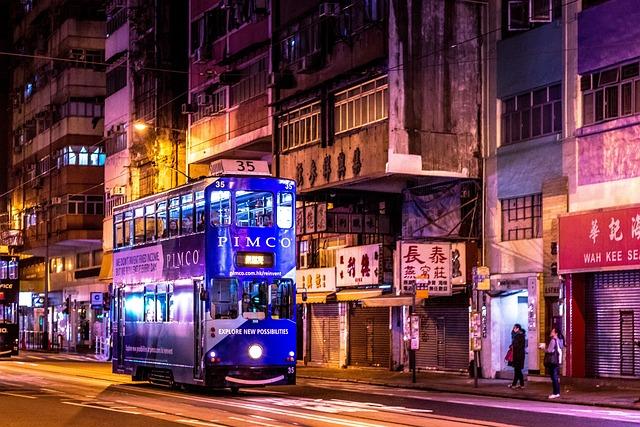In cities around the world, art and street culture are more than just creative expressions—they are vital forces shaping the identity and life of urban spaces. From vibrant murals and graffiti to music, dance, and fashion influenced by the streets, these elements contribute to the unique character of global cities, reflecting their history, diversity, and social dynamics. This article explores how art and street culture influence city landscapes, foster community connections, and drive cultural innovation in today’s rapidly evolving urban environments.
Table of Contents
- The Role of Urban Art in Revitalizing City Spaces
- Street Culture as a Catalyst for Community Engagement
- Balancing Preservation and Innovation in Global Cityscapes
- Strategies for Supporting Sustainable Artistic Expression in Urban Areas
- The Conclusion
The Role of Urban Art in Revitalizing City Spaces
Urban art has emerged as a powerful catalyst for breathing new life into once-neglected city areas. By transforming bland walls and forgotten alleys into vibrant canvases, artists infuse these spaces with energy, making them destinations for locals and tourists alike. This form of creative expression does more than beautify; it fosters a sense of community pride and ownership, encouraging residents to engage with their surroundings in meaningful ways. Public murals and installations can highlight cultural heritage, social issues, and local stories, paving the way for dialog and deeper connections within urban neighborhoods.
Key impacts of urban art on city revitalization include:
- Stimulating economic growth by attracting visitors to cultural hotspots and supporting local businesses.
- Encouraging collaboration between artists, government, and communities to promote inclusive development.
- Reducing vandalism and crime by increasing community engagement and surveillance through active public spaces.
- Providing platforms for marginalized voices to express identity, challenge stereotypes, and inspire social change.
Street Culture as a Catalyst for Community Engagement
Urban environments have long been transformed by the vibrancy of street culture, turning public spaces into dynamic canvases where local voices and identities come alive. This cultural phenomenon not only spices up cityscapes but also fosters stronger communal ties. Murals, graffiti art, pop-up performances, and open-air markets encourage residents to engage with one another, bridging gaps across age, ethnicity, and socioeconomic backgrounds. Such interactions help build a shared sense of ownership and pride in neighborhoods, ultimately nurturing safer and more inclusive communities.
Beyond aesthetics, street culture offers practical platforms for social participation that amplify marginalized perspectives and stimulate local economies.It enables:
- Collaborative projects between artists and city planners to reimagine neglected spaces.
- Community workshops and events that promote cultural exchange and skill-building.
- Support systems for emerging creative talents rooted in the neighborhood.
Through these avenues, urban dwellers don’t just witness culture—they actively shape and sustain it, demonstrating that street culture is a powerful catalyst for civic engagement and collective growth in cities worldwide.
Balancing Preservation and Innovation in Global Cityscapes
Global cities constantly navigate the delicate dance between honoring their rich histories and embracing cutting-edge advancements. Architectural landmarks and heritage sites serve as tangible connections to the past, grounding communities in shared identity and culture. Yet,the influx of contemporary design and technology challenges urban planners to weave innovation into existing fabrics without erasing stories etched in stone. This interplay frequently enough results in vibrant, multi-layered cityscapes where vintage facades coexist harmoniously alongside sleek skyscrapers and green tech installations.
In this evolving urban narrative, stakeholders prioritize:
- Community engagement: Involving local voices ensures preservation efforts respect both historical significance and modern needs.
- Sustainable innovation: Integrating eco-kind technologies helps future-proof cities while maintaining cultural landmarks.
- Adaptive reuse: Repurposing old buildings with contemporary functions bridges past and present creatively.
Balancing these factors nurtures dynamic environments where tradition informs progress, making global cities rich tapestries of identity and innovation.
Strategies for Supporting Sustainable Artistic Expression in Urban Areas
Urban centers thrive when artists have the freedom and resources to innovate without constraints. to nurture this, cities must prioritize collaborative spaces where creators from diverse backgrounds converge, exchange ideas, and co-develop projects that reflect the community’s spirit. This can be achieved through adaptive reuse of underutilized buildings, turning vacant lots into vibrant arts hubs, and supporting local artist-run galleries that challenge conventional notions of public space. Crucially,sustaining artistic expression also involves safeguarding cultural heritage while embracing new media and techniques that push boundaries.
Effective support further depends on inclusive policies that balance commercial interests and creative freedoms. Urban planners and policymakers can implement:
- Grant programs and microfunding targeted at street artists and emerging talents.
- legal frameworks that protect public art from censorship and unjust removal.
- Community engagement initiatives inviting residents to participate in art installations and cultural events.
- Educational partnerships connecting schools with local artists to foster early appreciation and skill development.
By integrating these approaches, cities create fertile ground for street culture and artistic expression to flourish, ultimately transforming urban environments into dynamic canvases of collective identity and innovation.
The Conclusion
In the ever-evolving landscape of global cities, art and street culture continue to play a vital role in shaping identity, community, and public space. From vibrant murals that tell stories of local heritage to spontaneous performances that bring streets to life, these creative expressions reflect the diversity and dynamism of urban life. As cities grow and change, embracing the influence of art and street culture not only enriches the urban experiance but also fosters a sense of belonging and connection among residents. Ultimately, understanding and supporting these cultural movements is key to cultivating cities that are not only functional but also inspiring and inclusive places to live.

